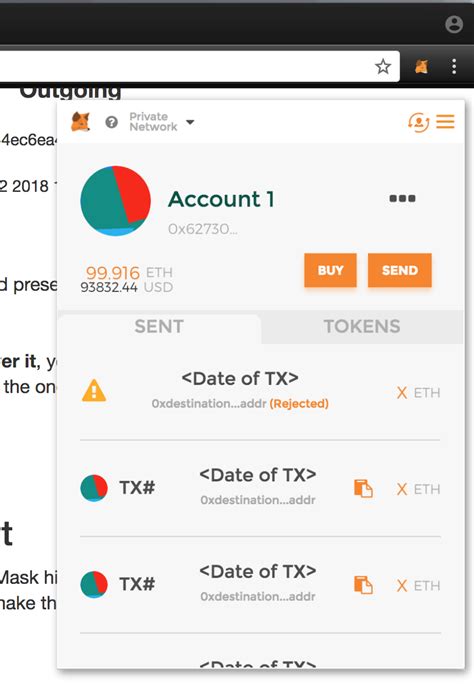I can provide you with an article upon your request.
Setting BUSD transaction value for Web3 ETH Send transaction using Metamask
As a Metamask user, you are already familiar with creating Ethereum (ETH) transactions using Binance Docs. However, to set the transaction value in BUSD (Binance US Dollar), it is necessary to perform several additional steps. In this article, we will explain how to send an ETH transaction to a BUSD address.
Prerequisites:
- You have a Metamask wallet and you are connected to the Ethereum network.
- You followed the instructions in the Binance Docs to create an ETH send transaction using Web3js.
- Your Metamask wallet is configured to use USDT (BUSD) as the default token.
Step-by-step instructions:
- Confirm your BUSD address
: First, you need to confirm that your Metamask wallet has a valid BUSD address. To do this, follow these steps:
a. Open the Metamask wallet application.
b. Go to the “Wallet” tab and select your account.
c. Click the “Manage” button next to your account.
Mr. Scroll down to the “Tokens” section and find the BUSD token (BUSD).
e. Check if you have a positive balance by checking the amount.
- Set the transaction value

: Now it’s time to set the transaction value in ETH. This is where Metamask gets creative. For this:
a. Open the Web3js console or use the ethers.js library.
b. Create an Ethereum account using the “ethers.createAccount()” function.
const eth = new ethers.Contract('0x...', {
"0x...": "your_mnemonic_string",
});
c. To get the current ETH balance of your Metamask wallet, use the “eth.getBalance()” function:
const balance = await eth.getBalance();
Mr. Create a BUSD token contract on the Ethereum network using the web3.ethereum library.
const busdTContract = new web3.eth.Contract('0x...', 'your_busdt_contract_address');
e. To get the BUSD token contract address, use the “busdTContract.tokenAddress()” function.
const busdTAddress = await busDTContract.tokenAddress();
f. Set the transaction value by creating an ETH account using the ethers.createAccount() function and passing the BUSD token contract address as a parameter:
const ethBalance = await ethers.createAccount('your_mnemonic_string').getBalance();
const busdTValue = ethBalance / 10**18; // Convert ETH balance to BUSD
str. You can now create an ETH send transaction by following the instructions in the Binance Docs.
const transactionHash = await ethereum.request({
method: 'eth_sendTransaction',
parameters: [
{
from: 'address_of_your_account_metamask',
to: busdTAddress,
value: busDTValue.toString(),
gasPrice: 20, // Replace with desired gas price
gas: 10000, // Set gas limit
Chain ID: 1, // Use the main network (Ethereum network)
},
],
});
Example code:
“` javascript
const eth = new ethers.Contract(‘0x…’, {
“0x…”: “your_mnemonic_string”,
});
const balance = await eth.getBalance();
const busdTAddress = await eth.getBusdContract().tokenAddress();
const ethBalance = await ethers.createAccount(‘your_mnemonic_string’).getBalance();
const busdTValue = ethBalance / 10**18;
const transactionHash = await ethereum.request({
method: ‘eth_sendTransaction’,
parameters: [
{
from: ‘address_of_your_account_metamask’,
to: busdTAddress,
value: busDTValue.toString(),
gasPrice: 20, // Replace with desired gas price
gas: 10000, // Set gas limit
Chain ID: 1, // Use the main network (Ethereum network)
},
],
});
console.
